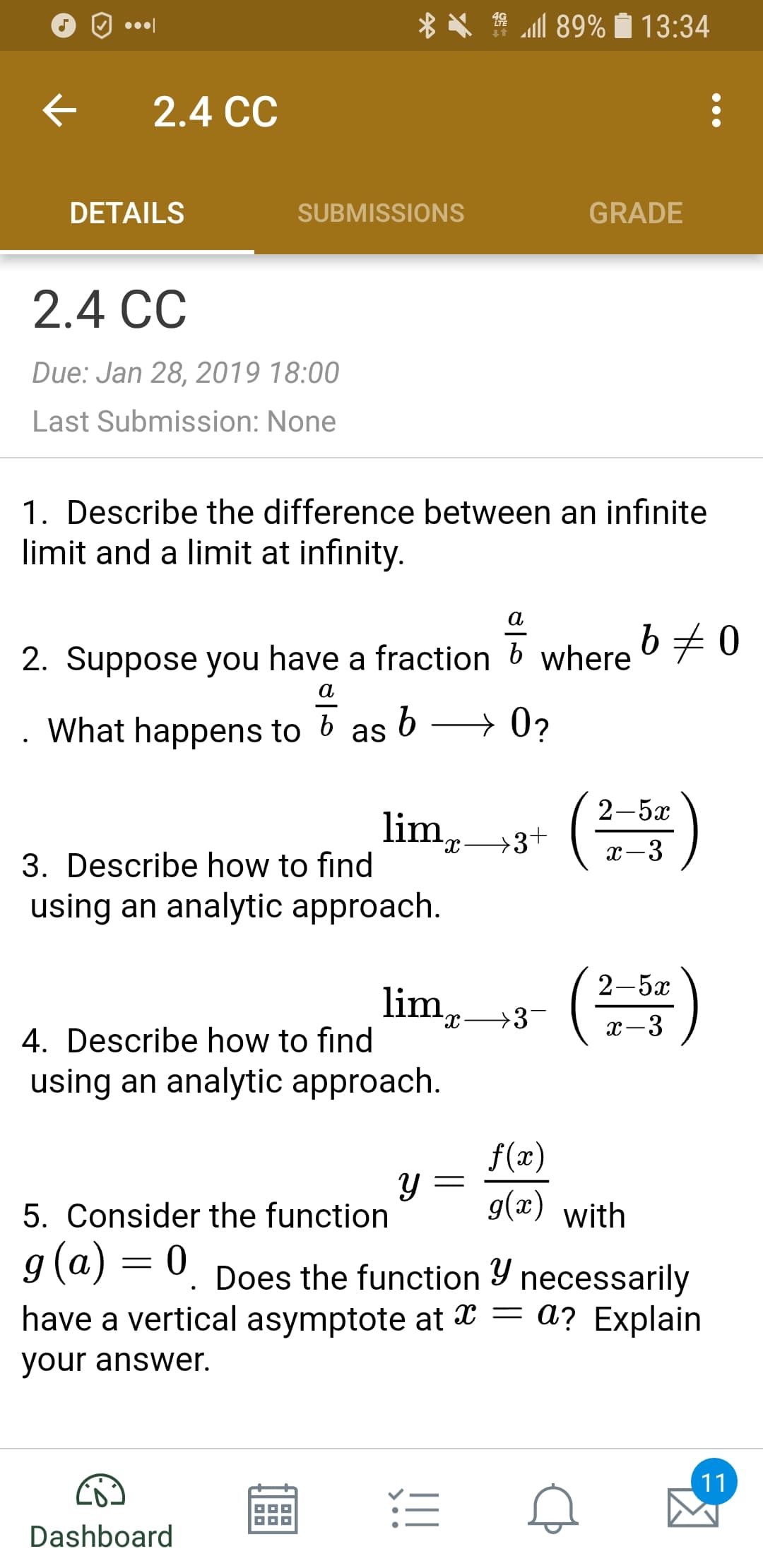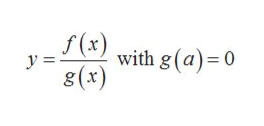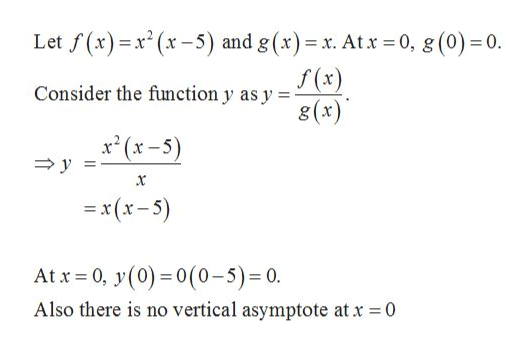O. X . "all 89% 13:34 < 2.4 CC DETAILS SUBMISSIONS GRADE 2.4 CC Due: Jan 28, 2019 18:00 Last Submission: None 1. Describe the difference between an infinite limit and a limit at infinity 2. Suppose you have a fraction b where What happens to b as 2-5x 3. Describe how to find using an analytic approach 2-5x lim, ->3 dc 4. Describe how to find using an analytic approach f(x) y g(x) with 5. Consider the function 9(aj-0. Does the function y necessarily have a vertical asymptote at x - a? Explain our answer. Dashboard
Percentage
A percentage is a number indicated as a fraction of 100. It is a dimensionless number often expressed using the symbol %.
Algebraic Expressions
In mathematics, an algebraic expression consists of constant(s), variable(s), and mathematical operators. It is made up of terms.
Numbers
Numbers are some measures used for counting. They can be compared one with another to know its position in the number line and determine which one is greater or lesser than the other.
Subtraction
Before we begin to understand the subtraction of algebraic expressions, we need to list out a few things that form the basis of algebra.
Addition
Before we begin to understand the addition of algebraic expressions, we need to list out a few things that form the basis of algebra.
How would you determine the answer for number 5?

Consider the given function,

Known Fact:
A function f(x) is said to have a vertical asymptote at x=a if f(x) grows arbitrarily large by choosing x sufficiently close to a.
That is,

Consider the below example,

Trending now
This is a popular solution!
Step by step
Solved in 5 steps with 3 images








